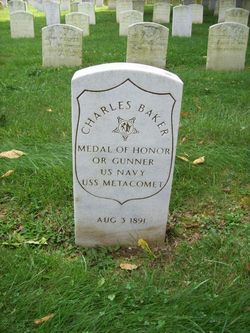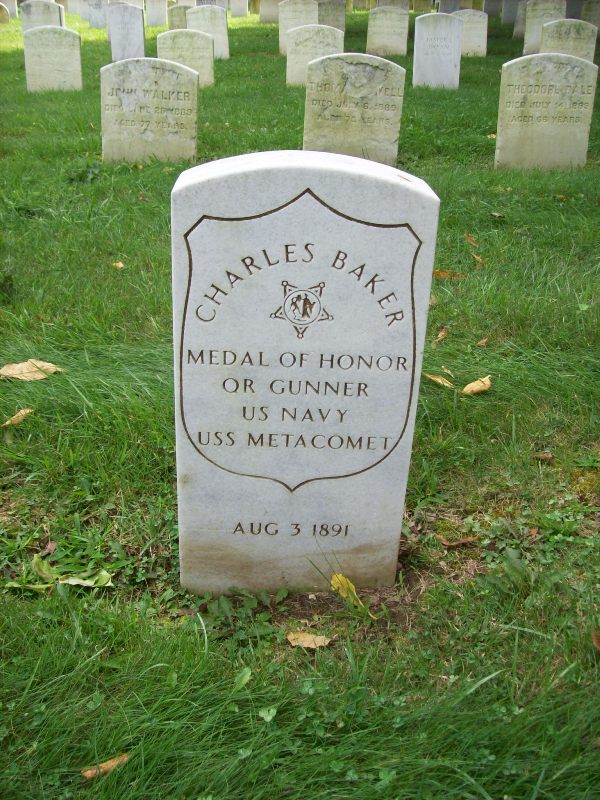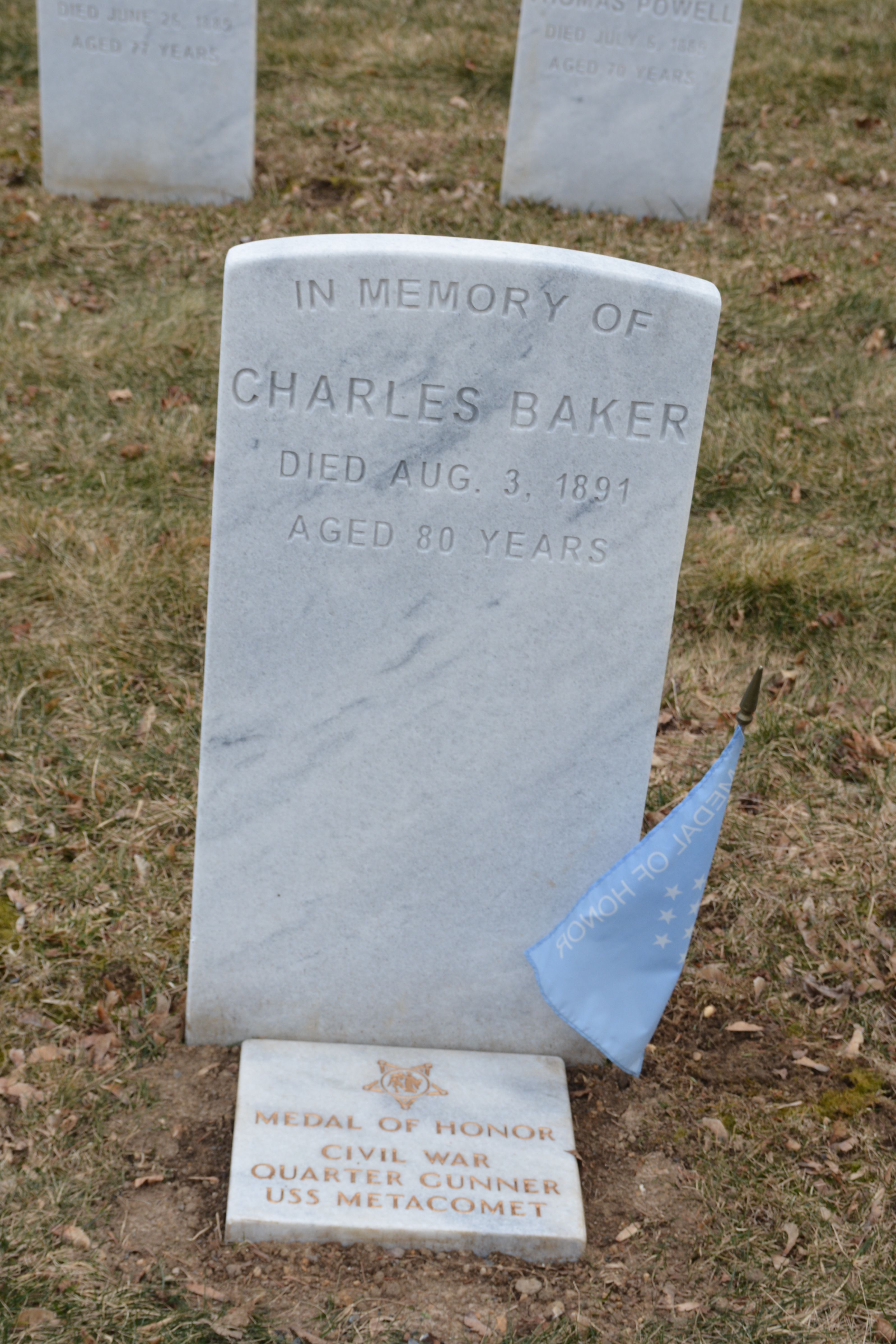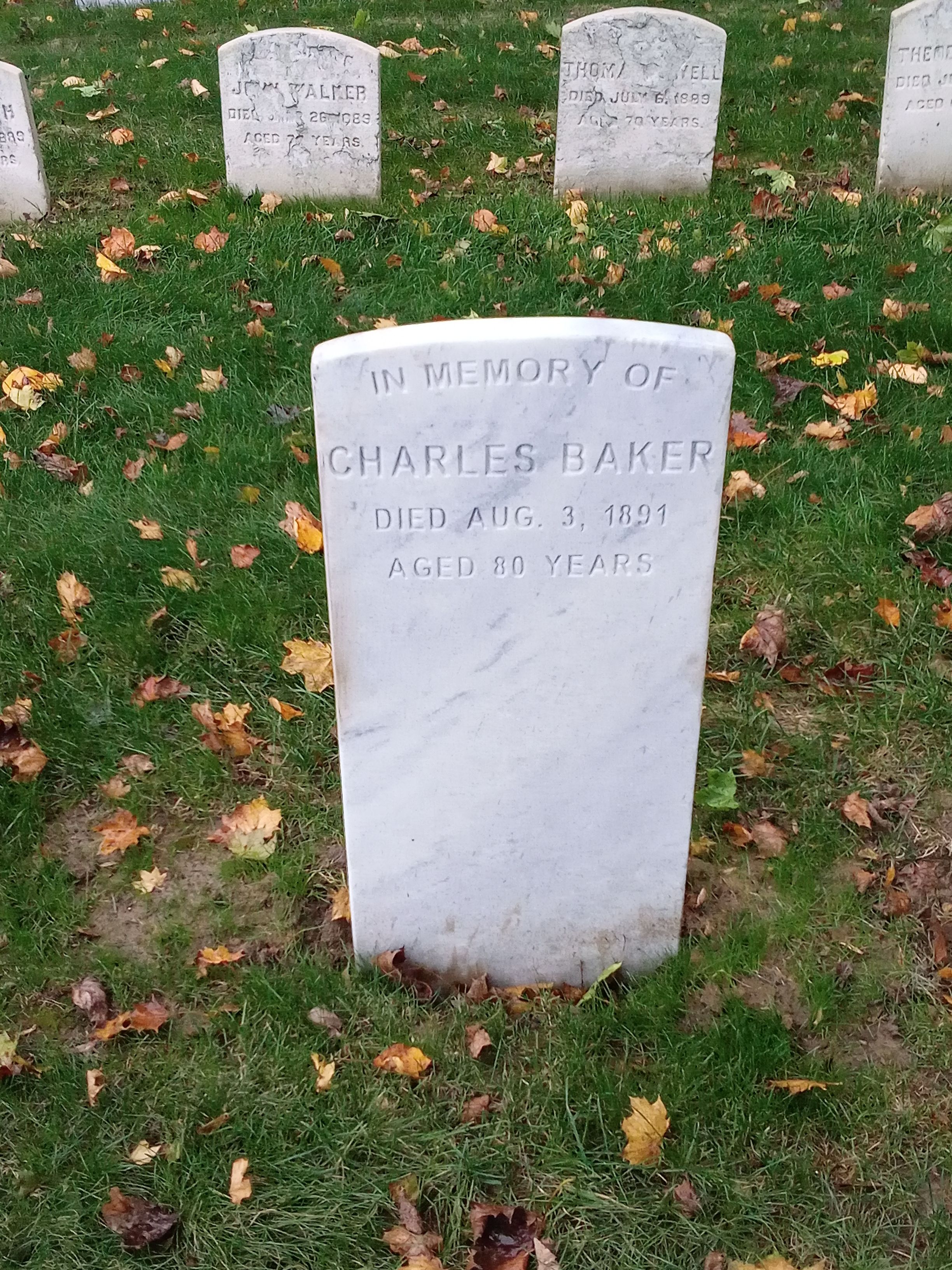In 1864 he was on the USS Metacomet, a newly-built wooden sidewheel steamer attached to the West Gulf Blockading Squadron in the blockade of Mobile Bay, Alabama. The tactic focused on preventing supplies from reaching Confederate ports, specifically New Orleans and Mobile. Smaller, faster boats known as blockade runners would sometimes get through, but with a fleet of 500 ships, the Union was able to destroy or capture 1500 runners over the course of the war.
On August 5 the Metacomet and 17 other ships entered Mobile Bay in a double column and captured an ironclad, the CSS Tennessee, but the Union ironclad Tecumseh hit a mine and sank. Charles and five other sailors rescued the crew, and were each awarded the Medal of Honor. His citation reads:
"The President of the United States of America, in the name of Congress, takes pleasure in presenting the Medal of Honor to Quarter Gunner Charles Baker, United States Navy, for extraordinary heroism in action while serving on board the U.S.S. Metacomet. As a member of the boat's crew which went to the rescue of the U.S. monitor Tecumseh when that vessel was struck by a torpedo in passing the enemy forts in Mobile Bay, 5 August 1864, Quarter Gunner Baker braved the enemy fire which was said by the admiral to be 'one of the most galling' he had ever seen, and aided in rescuing from death ten of the crew of the Tecumseh, eliciting the admiration of both friend and foe." (War Department, General Orders No. 71, January 15, 1866)
Following the Union victory there, the Metacomet joined a blockade off the Texas coast, returning to Mobile in the spring of 1865 to drag the Bay and sweep for mines. By then, Charles reenlisted for what was probably his last three-year tour. After two weeks in a naval hospital in 1867, he returned to duty at age 58. Documentation is lacking as to when he was discharged from the Navy and when he entered the Naval Home in Philadelphia, but throughout the 1880s he was admitted at least five times to the on-campus hospital with malaria-like symptoms: high fever, chills, and pain. Each time he would return to the home after about a month-long stay. Charles died at the Naval Home on August 3, 1891 at age 82.
In 1864 he was on the USS Metacomet, a newly-built wooden sidewheel steamer attached to the West Gulf Blockading Squadron in the blockade of Mobile Bay, Alabama. The tactic focused on preventing supplies from reaching Confederate ports, specifically New Orleans and Mobile. Smaller, faster boats known as blockade runners would sometimes get through, but with a fleet of 500 ships, the Union was able to destroy or capture 1500 runners over the course of the war.
On August 5 the Metacomet and 17 other ships entered Mobile Bay in a double column and captured an ironclad, the CSS Tennessee, but the Union ironclad Tecumseh hit a mine and sank. Charles and five other sailors rescued the crew, and were each awarded the Medal of Honor. His citation reads:
"The President of the United States of America, in the name of Congress, takes pleasure in presenting the Medal of Honor to Quarter Gunner Charles Baker, United States Navy, for extraordinary heroism in action while serving on board the U.S.S. Metacomet. As a member of the boat's crew which went to the rescue of the U.S. monitor Tecumseh when that vessel was struck by a torpedo in passing the enemy forts in Mobile Bay, 5 August 1864, Quarter Gunner Baker braved the enemy fire which was said by the admiral to be 'one of the most galling' he had ever seen, and aided in rescuing from death ten of the crew of the Tecumseh, eliciting the admiration of both friend and foe." (War Department, General Orders No. 71, January 15, 1866)
Following the Union victory there, the Metacomet joined a blockade off the Texas coast, returning to Mobile in the spring of 1865 to drag the Bay and sweep for mines. By then, Charles reenlisted for what was probably his last three-year tour. After two weeks in a naval hospital in 1867, he returned to duty at age 58. Documentation is lacking as to when he was discharged from the Navy and when he entered the Naval Home in Philadelphia, but throughout the 1880s he was admitted at least five times to the on-campus hospital with malaria-like symptoms: high fever, chills, and pain. Each time he would return to the home after about a month-long stay. Charles died at the Naval Home on August 3, 1891 at age 82.
Bio by: Earl Larkins
Advertisement




